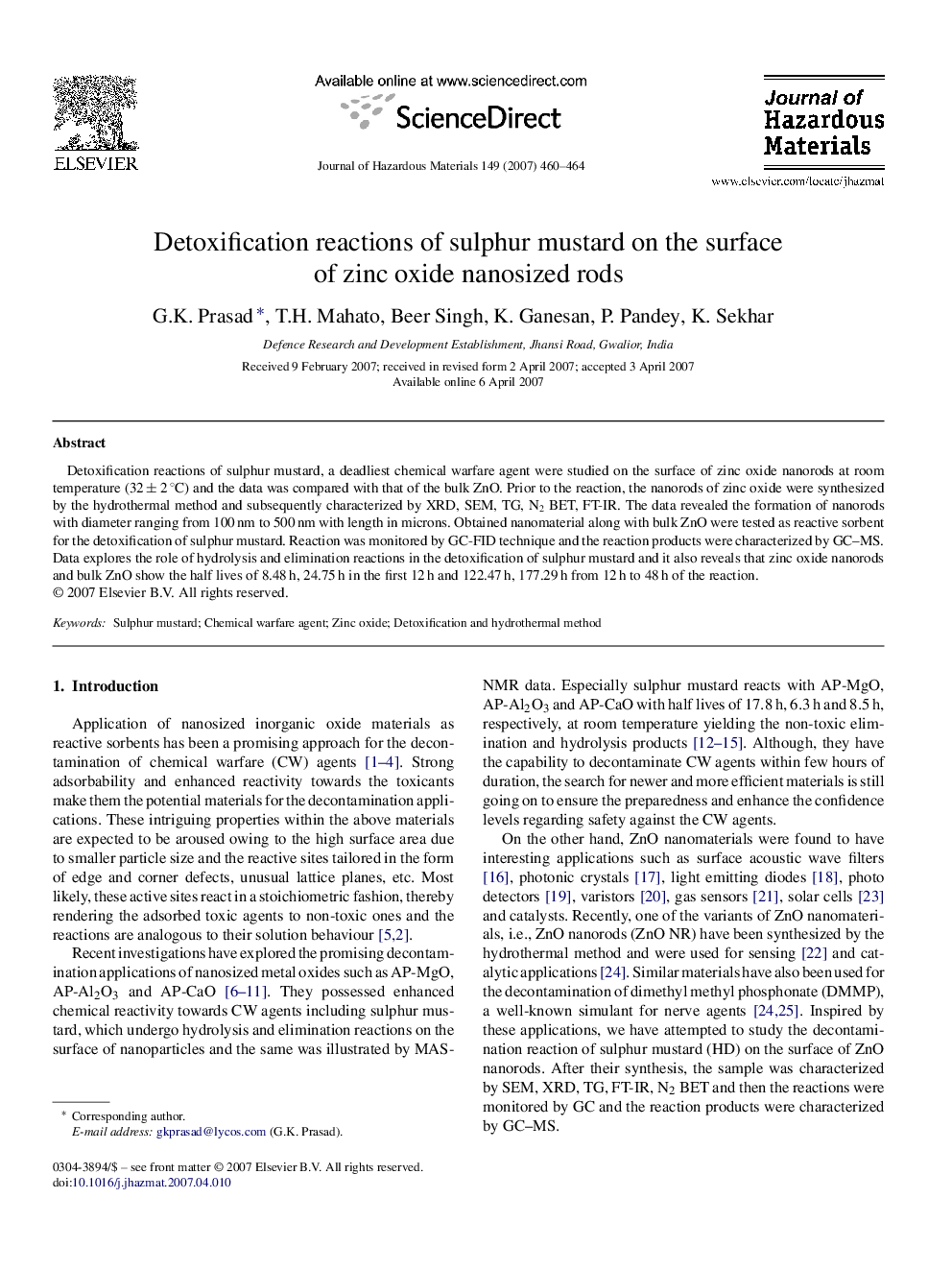| Article ID | Journal | Published Year | Pages | File Type |
|---|---|---|---|---|
| 584204 | Journal of Hazardous Materials | 2007 | 5 Pages |
Abstract
Detoxification reactions of sulphur mustard, a deadliest chemical warfare agent were studied on the surface of zinc oxide nanorods at room temperature (32 ± 2 °C) and the data was compared with that of the bulk ZnO. Prior to the reaction, the nanorods of zinc oxide were synthesized by the hydrothermal method and subsequently characterized by XRD, SEM, TG, N2 BET, FT-IR. The data revealed the formation of nanorods with diameter ranging from 100 nm to 500 nm with length in microns. Obtained nanomaterial along with bulk ZnO were tested as reactive sorbent for the detoxification of sulphur mustard. Reaction was monitored by GC-FID technique and the reaction products were characterized by GC-MS. Data explores the role of hydrolysis and elimination reactions in the detoxification of sulphur mustard and it also reveals that zinc oxide nanorods and bulk ZnO show the half lives of 8.48 h, 24.75 h in the first 12 h and 122.47 h, 177.29 h from 12 h to 48 h of the reaction.
Related Topics
Physical Sciences and Engineering
Chemical Engineering
Chemical Health and Safety
Authors
G.K. Prasad, T.H. Mahato, Beer Singh, K. Ganesan, P. Pandey, K. Sekhar,
